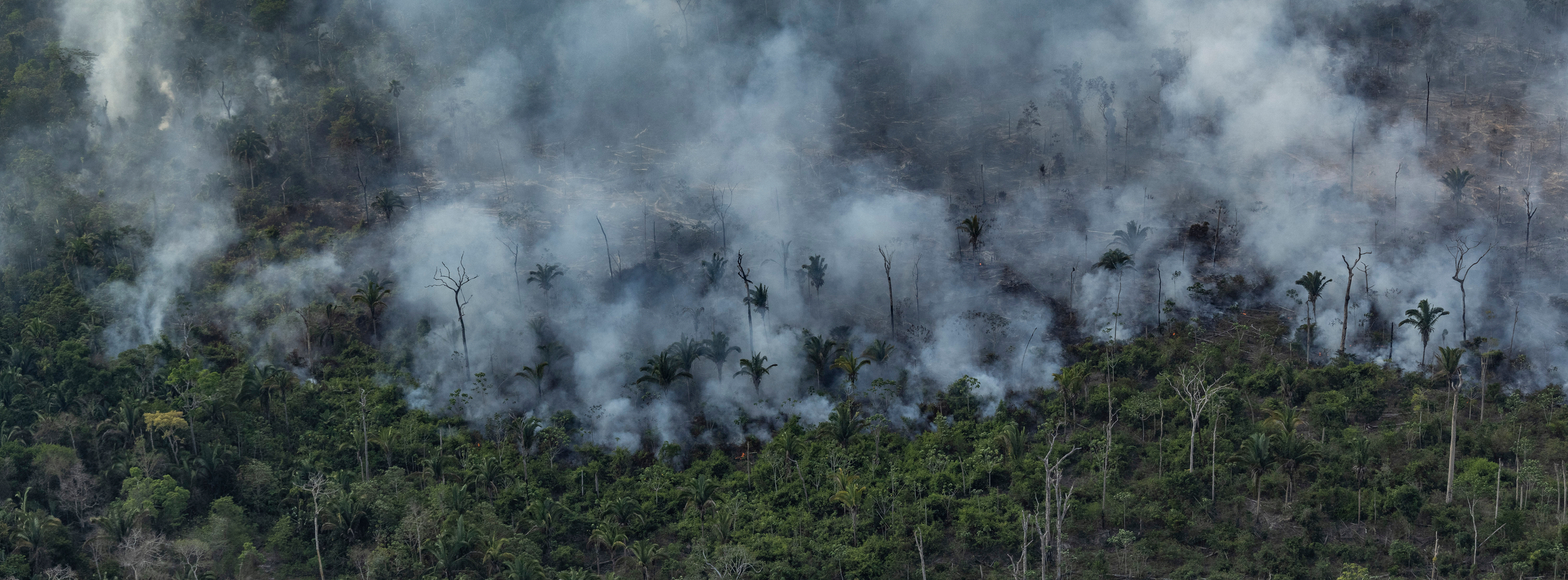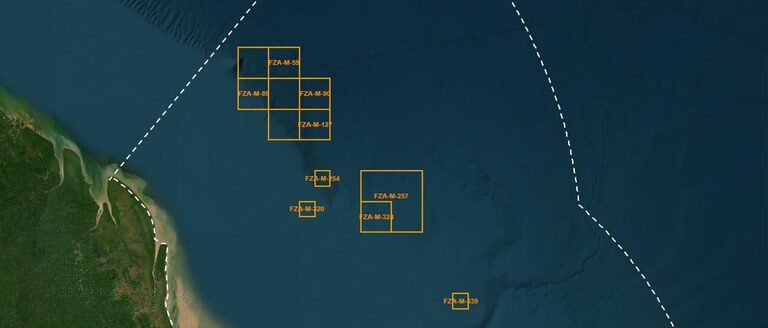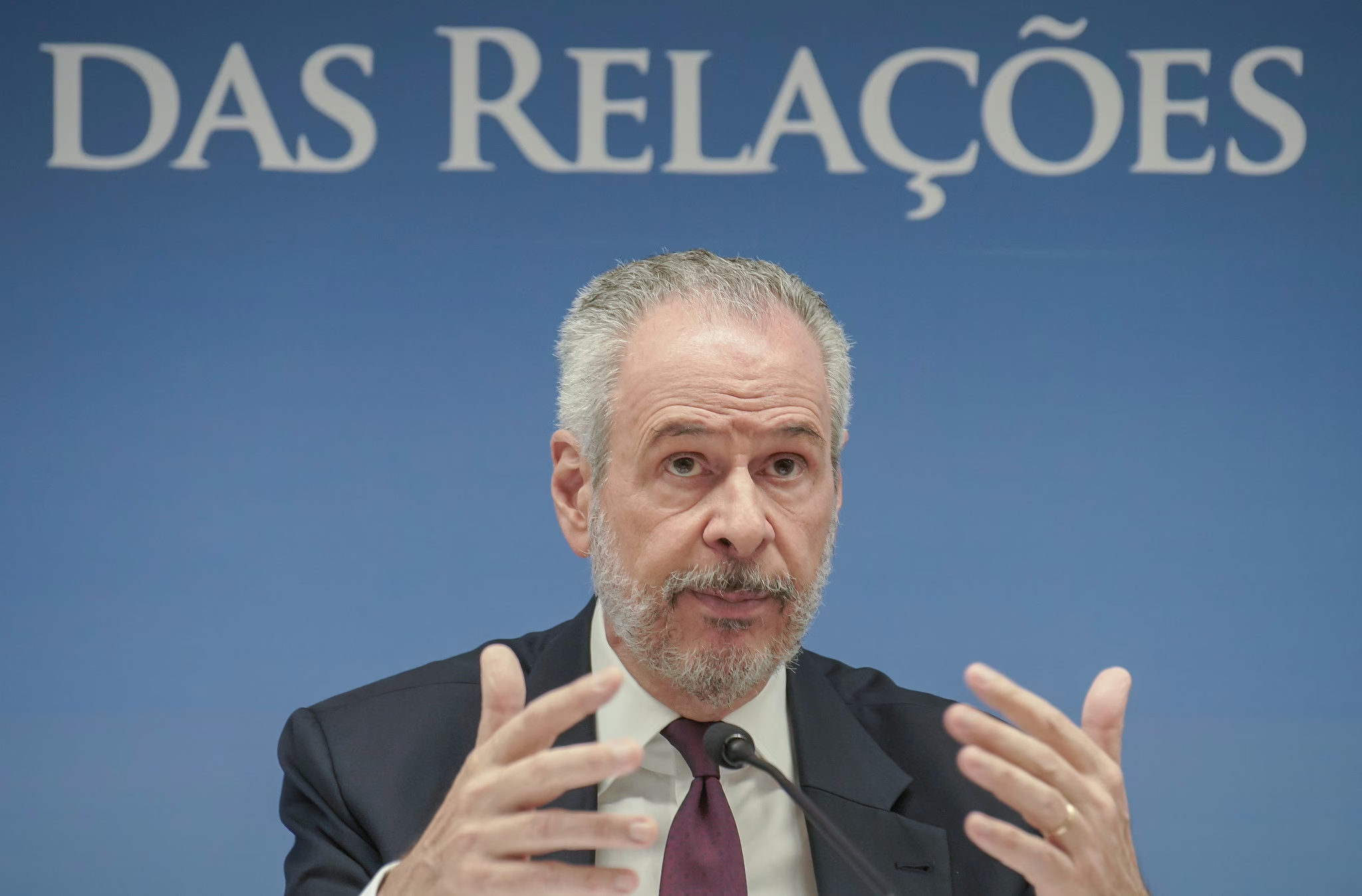Brazil’s greenhouse gases emissions in 2020 grew by 9.5%, while worldwide they dropped by almost 7% due to the Covid-19 pandemic. The increase in deforestation rates last year, especially in the Amazon, put Brazil on the wrong way and left it at a disadvantage in the Paris Agreement. Last year the country saw its highest carbon emission level since 2006. With the increase greenhouse gases and the drop of 4.1% in GDP, Brazil became poorer and polluted more.
The data comes from the new issue of SEEG (Greenhouse Gas Emission Estimation System), by the Brazilian NGO network Climate Observatory (Observatório do Clima), which calculates every year Brazil’s climate pollution. In its ninth edition, released this Thursday (10/28), the SEEG estimates Brazil’s gross emissions in 2020 at 2.16 billion tonnes of carbon dioxide equivalent (Gt CO2e), against 1.97 billion in 2019.
READ THE SEEG REPORT HERE.
Discounting carbon removals by secondary forests and protected areas, the country’s net emissions (see below) last year were 1.52 Gt CO2e, which represented a 14% increase over 2019, when they were at 1.34 Gt CO2e.
Of the five sectors of the economy that account for Brazil’s emissions, there was a rise in three, a drop in one, and one remained stable.
The energy sector, which accounted for 18% of the country’s emissions last year, saw a sharp drop of 4.6%. This was in direct response to the pandemic, which in the first months of 2020 reduced passenger transport, industrial production and electricity generation. With 394 million tonnes of CO2e, the energy sector returned to 2011 emission levels.
“The energy sector was the one with the biggest percentage drop in emissions in 2020. This result is a clear reflection of the decrease in some activities due to the Covid-19 lockdowns. The reduction of emissions in passenger transport stands out. Aviation fuel consumption has dropped by half. The demand for gasoline and ethanol has also significantly decreased”, says Felipe Barcellos, a researcher at Iema (Institute of Energy and Environment), a São Paulo-based think-tank that estimates emissions for the energy and industry sectors.
Emissions from agriculture, which reached 577 million tonnes of CO2e (27% of the national total) in 2020, also increased, by 2.5%. It’s the biggest rise since 2010, in a sector whose emissions in recent years have experienced only slight fluctuations. This occurred in part for a counterintuitive reason: the economic crisis reduced beef consumption, with a reduction of almost 8% in cattle slaughter. The national herd increased by about 3 million head, which, in turn, also increased methane emissions from ruminant fermentation (the cows’ “burps”).
“The agricultural sector saw its highest emission of greenhouse gases ever, even in a year of pandemic. Even though the implementation of low-emission agricultural technologies has been steadily growing, this falls very short of what’s needed to change the emissions trajectory in the sector and demonstrate the real potential that Brazil has in sustainable, low-carbon agriculture,” explains Renata Potenza, head of projects at Imaflora, the organization responsible for calculating agricultural emissions.
In the waste sector, quarantine measures also possibly (there are still uncertainties about the effect) increased emissions, mainly from the increased disposal of garbage in landfills and dumps (unofficial estimates indicate that the generation of municipal solid waste increased by about 10 % in the year 2020) and domestic sewage. The growth in the sector was 1.8%, going from 90.4 million to 92 million tonnes of CO2e.
“This sector’s carbon emission have historically been the fastest growing in Brazil since 1970, following population increase and urbanization. However, it accounts for the smallest share of the total: only 4% of national emissions”, says Iris Coluna, project analyst at ICLEI South America, which calculates the sector’s emissions.
Industrial processes, represented above all by the manufacture of steel and cement, highly emitting activities, remained stable in their emissions even during the pandemic. The sector fluctuated from 99.5 million to 99.7 million tons from 2019 to 2020, representing 5% of total emissions in Brazil.
Land-grabbers don’t work from home
To no one’s surprise, what pulled the curve up and made Brazil possibly the only major polluter on the planet to increase its emissions in the year the Earth stood still was the land-use change sector. Represented mostly by deforestation in the Amazon and the Cerrado savannas (which together account for almost 90% of emissions in the sector), land use changes emitted 998 million tonnes of CO2e in 2020, an increase of 24% over 2019 (807 million).
As environmental inspection is dismantled in the Bolsonaro government and control is lost over crimes such as land grabbing, mining and illegal logging, deforestation in the Amazon in 2020 spiked, reaching 10,851 km2 according to data from the Prodes/Inpe system. For its estimates, SEEG uses data from the MapBiomas consortium, which also measures the cutting of secondary forests and uses a different time series from Inpe’s (MapBiomas considers January to December and not from August to July, as does Prodes). However, the pointed trend is similar in both systems.
In the Amazon alone, emission from changes in land use last year reached 782 million tonnes of CO2e. If the Brazilian forest were a country, it would be the ninth largest emitter in the world, ahead of Germany. Adding the Cerrado (113 million tons of CO2e e) to the account, the two biomes emit more than Iran and would be the eighth emitter in the world.
“Land-use change once again stands out as the main source of emissions in Brazil. Twenty thousand and twenty was the year in which we had the highest emissions in the sector in eleven years, a clear reflection of the ongoing dismantling of the environmental policy, which has favored the resumption of high deforestation rates”, says Ane Alencar, Science director at Ipam (Institute for Environmental Research of the Amazon), the organization which calculates the sector’s emissions in SEEG.
The lack of control over deforestation means that Brazil’s emissions curve is still dominated by an activity that is mostly illegal and does not contribute to GDP or job creation. It also places a disproportionate weight on Brazilian emissions on rural activity: if one adds up the direct emissions from agriculture (27%) and indirect emissions from deforestation (46%), agribusiness accounts for almost three quarters (73%) of Brazil’s greenhouse gas emissions.
| Brazil’s emissions in 2019 and 2020 (tCO2e – GWP-AR5) | |||||
| Sector | 2019 | % | 2020 | % | Variation 2019-2020 |
| Agriculture | 562,987,702 | 29% | 577,022,998 | 27% | 2.5% |
| Energy | 412,466,747 | 21% | 393,705,260 | 18% | -4.5% |
| Industrial processes | 99,472,616 | 5% | 99,964,389 | 5% | 0.5% |
| Waste | 90,399,714 | 5% | 92,047,812 | 4% | 1.8% |
| Land-use change and forestry | 806,996,124 | 41% | 997,923,296 | 46% | 23.7% |
| Total gross emissions | 1,972,322,903 | 2,160,663,755 | 9.5% | ||
| Total net emissions | 1,336,613,309 | 1,524,954,161 | 14.1% | ||
Fonte: SEEG 9
Target met, with one big caveat
SEEG also assessed compliance with the National Policy on Climate Change (PNMC) law. Enacted in 2009, the legislation called for the country to cut its emissions by 36.1% to 38.9% by 2020 compared to a scenario projected under quite generous assumptions (such as 5% a year GDP growth). According to these criteria, the country’s gross emissions in 2020, calculated according to the guidelines of the IPCC’s Second Assessment Report (AR2), should be between 1,977 Gt CO2e and 2,068 Gt CO2e. Converting gross emissions to AR2 factors, SEEG has put the 2020 figure at 2,047 Gt CO2e. Therefore, Brazil met the target at its least ambitious limit, with a 1% margin.
It’s bittersweet news. “Although the country has met the overall target, and has also fulfilled most of the targets of the Low Carbon Agriculture Plan, the behavior of our emissions has not changed since the PNMC entered into force in 2010”, says Tasso Azevedo, coordinator of SEEG. He recalls that the main goal of the law, an 80% reduction in the deforestation rate in the Amazon, remained very far from being accomplished: while the pledge was to cut deforestation rates to a maximum of 3,925 km2 in 2020, the measured deforestation was 176% higher that year – 10,851 km2. “Compared to 2010, when the PNMC target was defined, Brazilian emissions increased by 23%. Deforestation remains the dominating factor in our our gross emissions, and, worst of all, these emissions are on an upward trend in the year in which we should start meeting the Paris Agreement targets.”
“The rule is clear: if you sow environmental dismantling, you harvest carbon dioxide,” said Marcio Astrini, executive secretary of the OC. “Brazil achieved the dubious honor of being perhaps the only major emitter that increased its pollution during the first year of the pandemic. SEEG data confirm that the destroyers of the forest, lulled by Jair Bolsonaro’s anti-environmental policy, did not stay in home office. It’s another blow to the country’s already shattered international image and an ominous signal for Brazil’s presence in Glasgow next week for COP26.”
GROSS X NET EMISSIONS
While preferring to report gross emissions, SEEG also estimates the so-called net emissions of Brazil, which considers removals of CO2 from the atmosphere by land-use changes (for example, the growth of secondary forests over abandoned pastureland) and by maintenance of forests in indigenous areas and conservation units. The federal government prefers to report net emissions to the United Nations. In the context of an economy heading towards “zero net emissions” in 2050, which is what is desired for Brazil, the role of carbon removals, especially by forests in recovery or regeneration, must be increasingly considered.
The Climate Observatory understands, however, that although this “discount” in the accounting of protected areas is authorized by the UNFCCC (United Nations Framework Convention on Climate Change), reporting gross emissions is more appropriate due to the peculiarities of the methodology for calculating removals in the Brazilian national greenhouse-gas inventory, which ends up not representing the reality of the trend of removals in the country. Those are actually in decline, as more forest inside and outside protected areas is clear-cut and burned.
Considering removals, net emissions from Brazil were 1.52 Gt CO2e, an increase of 14% compared to 2019, when they were 1.34 Gt CO2e. The peak of net emissions happened in 2003, when they reached 2.65 billion tonnes of equivalent carbon dioxide. Since 2010, when the PNMC entered into force, Brazil has increased its net emissions by 28% — a growth proportionally greater than that of gross emissions.
________
About SEEG: The Greenhouse Gas Emission Estimation System was created in 2012 to comply with a determination of the PNMC (National Policy on Climate Change). The decree that regulates the PNMC established that the country should produce annual emission estimates, in order to monitor the execution of the policy. The government, however, did not produce them. The national inventories, which are fundamental instruments for knowing in detail the country’s emissions profile, are published only every five years.
SEEG (seeg.eco.br) was the first national initiative to produce annual estimates for the entire economy. It was launched in 2012 and incorporated into the Climate Observatory in 2013. Today, in its ninth edition, it is one of the largest national databases on greenhouse gas emissions in the world, comprising Brazilian emissions from five sectors (Agriculture, Energy, Change of Land Use, Industrial Processes and Waste) since 1970.
The estimates are generated according to the guidelines of the IPCC (Intergovernmental Panel on Climate Change), based on the Brazilian Inventories of Anthropogenic Emissions and Removals of Greenhouse Gases, by MCTIC (Ministry of Science, Technology, Innovation and Communications).
About the Climate Observatory: Founded in 2002, it is the main Brazilian civil society network on the climate agenda, with 70 member organizations, including environmental NGOs, think-tanks and social movements. Its goal is to help build a decarbonised, egalitarian, prosperous and sustainable Brazil in the fight against the climate crisis. Since 2013, OC has published SEEG, the annual estimate of greenhouse gas emissions in Brazil (oc.eco.br).





